Discover how Rolfing benefits athletes and who should consider this innovative approach to enhance performance and prevent injuries. Rolfing, a form of bodywork that focuses on realigning the body’s connective tissues, can optimize a professional athlete’s range of motion, flexibility, and overall well-being. By addressing imbalances and restrictions in the body, Rolfing aims to improve posture, movement efficiency, and recovery time for athletes across various disciplines.
Athletes looking to boost their athletic performance or address chronic pain issues may find Rolfing beneficial in achieving their goals. Stay tuned to explore the transformative effects of Rolfing for athletes, including its impact on knee injuries, and determine if this specialized therapy could be the missing element in your training regimen.
Rolfing Explained
Rolfing, a unique form of bodywork, aims to help athletes by addressing imbalances caused by training and gravity. Certified advanced Rolfers play a crucial role in providing high-quality treatment to athletes, focusing on easing muscle tension and enhancing overall body function. Unlike traditional massage or chiropractic treatments, Rolfing takes a holistic approach by treating the whole body rather than just specific problem areas.
The potential effects of Rolfing on athletes are significant. Athletes may experience improved motor requirements, better alignment, and increased flexibility as a result of this specialized bodywork technique. These outcomes can contribute to enhanced athletic performance on various levels.
Core Principles
Rolfing is guided by foundational principles that set it apart from other therapies. The key beliefs behind Rolfing practice emphasize the importance of structural integration and balance within the body. By addressing these core principles, certified advanced Rolfers can help athletes achieve optimal physical function and performance.
Technique Overview
In a typical Rolfing session, practitioners use a hands-on approach to manipulate the body’s soft tissues and fascia systematically. This process aims to release tension, realign the body’s structure, and improve overall movement patterns. By following a step-by-step process during each session, certified advanced Rolfers can target specific areas of concern while promoting general well-being.
Target Audience
Athletes at all levels can benefit from Rolfing sessions – from professional competitors seeking performance enhancement to recreational sports enthusiasts looking to address specific problems or injuries. Even children involved in sports activities can find support through Rolfing therapy. Integrating Rolfing into an athlete’s training program can optimize results by improving physical performance and preventing injuries.
The Rolfing Ten-Series
The Rolfing Ten-Series is a structured program developed by a certified advanced Rolfer specifically tailored to address musculoskeletal issues commonly faced by athletes. This series comprises ten sessions, each focusing on deep tissue manipulation techniques aimed at enhancing posture, alleviating back pain, and boosting overall athletic performance. Throughout the sessions, particular attention is given to areas such as the hips and back, targeting these regions to release tension, enhance muscle tone, and optimize muscle function for peak performance.
Athletes undergoing the Rolfing Ten-Series can expect significant transformative changes in their bodies throughout the sessions. These changes often result in improved alignment, reduced pain levels, and heightened athletic capabilities. By systematically addressing various structural imbalances through targeted tissue manipulation techniques, athletes can experience substantial enhancements in their physical well-being and sports performance.
Series Breakdown
- The Rolfing series is structured to progressively address different areas of the body throughout ten sessions.
- Emphasis is placed on enhancing overall movement patterns rather than isolated muscles or body parts.
- Athletes should consider both the initial investment required for a full series of sessions and how it compares with other treatment options available.
- Athletes can anticipate gradual improvements in posture, muscle tone, and reduction in injury-related restrictions as they progress through the series.
Three Units
In Rolfing therapy, practitioners focus on three main units within the body that contribute to overall structural alignment. Each unit plays a crucial role in addressing specific areas of tension or misalignment that may be affecting an athlete’s performance. By comprehensively targeting all three units during Rolfing sessions, individuals can achieve optimal balance and functionality within their bodies.
Series Benefits
Engaging in a complete series of Rolfing sessions offers athletes numerous benefits that accumulate with each session attended. As athletes progress through the series, they can expect enhanced mobility, increased flexibility, and improved muscular coordination due to ongoing adjustments made during each session. The long-term advantages of completing a full Rolfing series include sustained improvements in posture, enhanced muscle function, and reduced risk of future injuries—resulting in better overall athletic performance.
Benefits for Athletes
Rolfing enhances athletic performance by improving flexibility and range of motion in the hips. This leads to better agility, making movements more efficient for athletes. The increased flexibility allows for a wider range of motion during training and competitions.
Athletes often experience musculoskeletal pain due to intense training sessions or competitions. Rolfing helps reduce this pain and prevents injuries commonly associated with rigorous physical activities. By addressing these issues, athletes can perform at their best without being hindered by discomfort or potential injuries.
Post-workout recovery is crucial for athletes to maintain a consistent training schedule and optimize productivity. Rolfing supports faster recovery, enabling athletes to bounce back quicker after intense workouts. This quick recovery turnaround time ensures that athletes can continue pushing themselves without long downtimes due to muscle soreness or fatigue.
Rolfing complements traditional treatments like massage therapy and chiropractic care. By combining these approaches, athletes receive comprehensive support in managing and preventing sports-related injuries effectively. The holistic approach ensures that all aspects of an athlete’s well-being are considered in their treatment plan.
Enhanced Movement
Rolfing plays a significant role in enhancing an athlete’s range of motion by releasing tension in the muscles surrounding the hips. This improved flexibility allows athletes to move more freely, contributing to better overall performance on the field or court.
Improved movement not only increases an athlete’s agility but also impacts their athletic performance positively. With an enhanced range of motion, athletes can execute movements with greater precision and efficiency, translating into improved speed, power, and coordination during training sessions and competitions.
Specific movements such as lateral shuffles, high kicks, or deep squats can be positively influenced by Rolfing due to its ability to improve joint mobility and muscle function around the hip area.
Coordination Improvement
Rolfing contributes significantly to enhancing coordination skills in athletes by aligning the body structurally. Proper structural alignment leads to better coordination between different muscle groups involved in various movements required during sports activities.
The relationship between structural alignment achieved through Rolfing sessions directly impacts an athlete’s coordination skills on the field or track. Real-life examples showcase how improved alignment has resulted in smoother movement patterns and increased precision in executing complex athletic maneuvers post-Rolfing treatments.
Performance Impact
The direct impact of Rolfing on athletic performance is profound as it works towards optimizing an athlete’s physical capabilities across different sports disciplines. Athletes who undergo regular Rolfing sessions often report improvements in areas such as speed, endurance, strength, and overall athletic prowess.
Early Intervention
Rolfing serves as an early intervention method for athletes, targeting specific motor restrictions to prevent potential injuries. By addressing these restrictions early on, athletes can avoid more severe issues down the line. This proactive approach is crucial in maintaining peak performance levels.
Early treatment through rolfing is particularly beneficial for children involved in sports, aiding in their athletic training by promoting proper movement patterns and reducing the risk of injuries. Parents and coaches play a vital role in raising awareness about the advantages of rolfing for young athletes.
The evidence-based benefits of rolfing are significant, helping athletes gradually ease restrictions, and leading to enhanced performance over time. Unlike traditional methods like massage or chiropractic care, rolfing focuses on creating lasting changes that positively impact an athlete’s overall experience and productivity.
Rolfing not only enhances an athlete’s physical well-being but also contributes to their mental state by improving their overall experience during training and competitions. Athletes undergoing rolfing sessions often report feeling more at ease physically and mentally, translating into better performance outcomes.
When compared to other interventions, such as chiropractic care or massage therapy, rolfing stands out due to its ability to target specific areas of restriction with precision. This tailored approach ensures that each session is focused on addressing the athlete’s unique needs effectively.
Role of Rolfer
A Rolfer plays a critical role in the Rolfing process by being trained to identify and address specific motor restrictions in athletes effectively. Their expertise lies in understanding how these restrictions impact an athlete’s performance and designing targeted interventions to alleviate them.
Certified Rolfers possess a unique set of skills that enable them to manipulate soft tissue structures with precision while considering the individual needs of each athlete. Building trust with clients is paramount for Rolfers as it fosters open communication and ensures effective treatment outcomes.
Identifying Needs
Before initiating Rolfing sessions, it is essential to conduct a thorough assessment of an athlete’s specific needs. This involves utilizing various assessment methods to pinpoint areas requiring improvement and develop personalized treatment plans tailored to address those concerns effectively.
Personalized treatment plans are key in Rolfing as they cater specifically to each athlete’s requirements, ensuring that the sessions are productive and yield positive results over time. By focusing on individual needs rather than generic approaches, Rolfers can maximize the benefits for athletes seeking their services.
Movement Quality
Enhancing movement quality through Rolfing can optimize posture, ease of motion, and overall performance for athletes. Rolfing addresses motor requirements by targeting changes in gravity’s impact on the body, leading to improved productivity and reduced musculoskeletal pain. By focusing on areas like the hips and muscles’ tone, Rolfing can help athletes achieve better muscle balance and coordination, enhancing their training efficiency over time. The cost-effectiveness of Rolfing compared to traditional methods like massage therapy makes it a valuable way for athletes to improve movement quality and prevent injuries.
Before Rolfing
Athletes should prepare before starting Rolfing by ensuring they have a clear understanding of their current physical condition and any specific issues they want to address during the sessions. Athletes need to communicate openly with their Rolfer about their goals, expectations, and any concerns they may have regarding the process. Pre-session requirements may include staying hydrated, wearing comfortable clothing that allows easy access to the areas being worked on, and mentally preparing for a deep tissue manipulation experience.
Common misconceptions or concerns athletes may have before starting Rolfing often revolve around the level of discomfort or pain they might experience during the sessions. Athletes should be reassured that while some discomfort may occur as deep tissues are manipulated, it is crucial for addressing underlying issues effectively. Educating athletes about the long-term benefits of Rolfing in improving movement quality can help alleviate any initial apprehensions they may have.
After Rolfing
After completing a series of Rolfing sessions, athletes can expect improvements in their overall posture, range of motion, and muscle flexibility. Post-Rolfing care involves staying active with gentle stretching exercises recommended by their Rolfer to maintain the progress made during the sessions. Athletes should also prioritize proper hydration and adequate rest to support their bodies’ recovery from the intense bodywork experienced during Rolfing.
Integrating Rolfing benefits into daily routines is crucial for sustaining long-term results obtained from the sessions. Athletes are encouraged to continue practicing good posture habits learned during Rolfing sessions throughout their daily activities. Regular self-care practices such as foam rolling or using massage balls can complement the effects of Rolfing by promoting muscle relaxation and reducing tension buildup after intense training sessions.
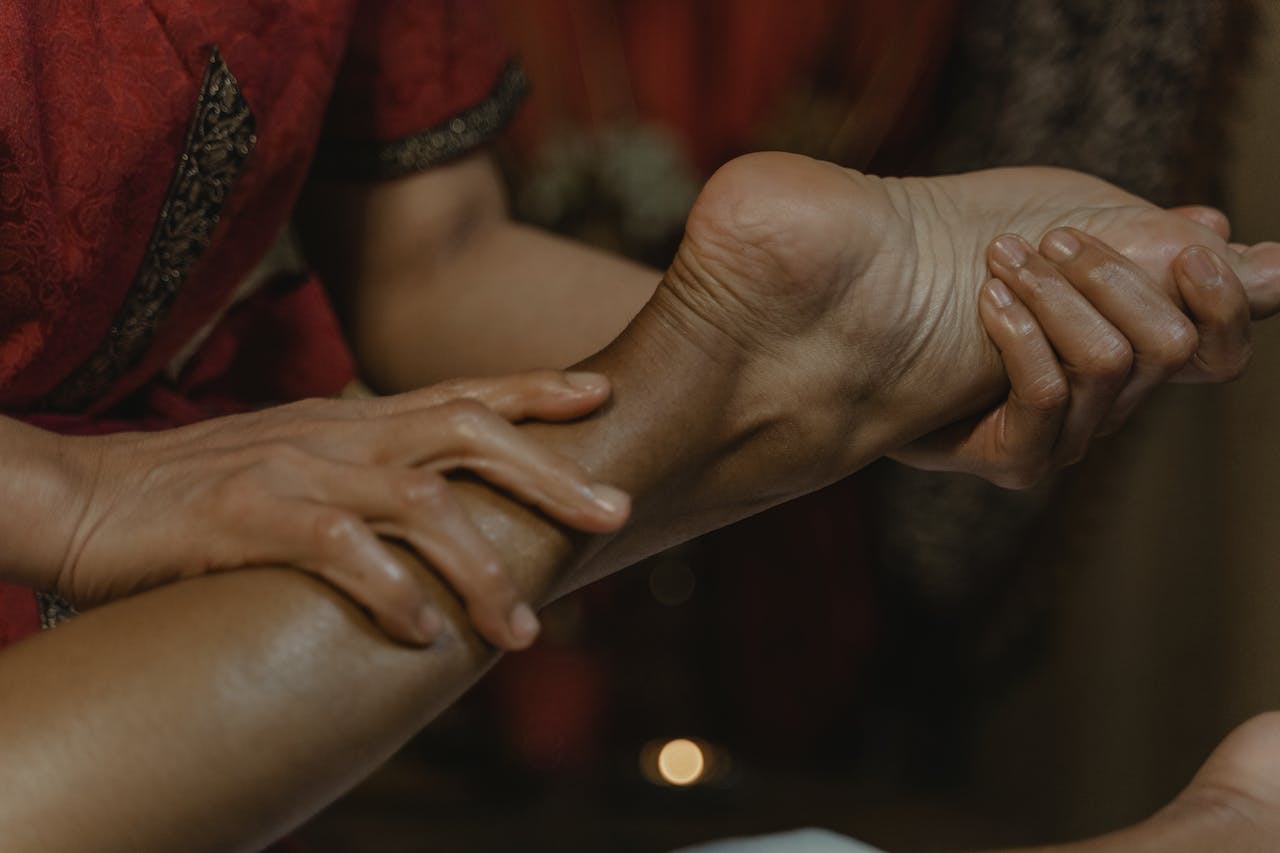
Target Audience
Rolfing appeals to a wide range of athletes, from professional and performance athletes to recreational athletes. The aim is to enhance their performance and overall well-being. By customizing Rolfing sessions, the treatment can cater to the specific needs and goals of each athlete.
Increasing awareness among athletes about the benefits of Rolfing is crucial. It aids in improving athletic performance, preventing injuries, and facilitating quicker recovery post-training or competition. This holistic approach addresses physical imbalances, enhances body awareness, and improves movement quality.
Tailoring Rolfing programs for different athlete groups is essential. Whether it’s a high-performance athlete striving for excellence, a child athlete navigating growth spurts, or a recreational athlete seeking balance in their training regimen – Rolfing can be adapted accordingly. This customization ensures that each athlete receives personalized care based on their unique requirements.
Supporting athletes in optimizing their training through Rolfing involves more than just physical manipulation. It encompasses enhancing body awareness and movement quality to aid athletes in reaching peak performance levels. By addressing underlying issues and promoting overall well-being, Rolfers plays a vital role in an athlete’s journey toward success.
Athletes Profile
An ideal candidate for Rolfing among athletes exhibit dedication to their sport while being open-minded about alternative therapies like Rolfing. These individuals are committed to maximizing their potential through holistic approaches that focus on both physical and mental well-being.
Prime candidates for Rolfing possess characteristics such as a strong desire for improvement, openness to new experiences, and a proactive attitude toward injury prevention and recovery. Athletes who prioritize self-care alongside rigorous training routines often find immense value in incorporating Rolfing into their regimen.
Athletes across various disciplines have reaped the benefits of Rolfing treatments. From runners improving stride efficiency to swimmers enhancing stroke mechanics – examples abound of how this therapy has positively impacted athletic performance by optimizing movement patterns and reducing strain on the body.
Exercise Enthusiasts
Exercise enthusiasts not only benefit from improved flexibility but also experience enhanced body alignment through Rolfing sessions. This therapy complements diverse workout routines by addressing specific muscle imbalances resulting from repetitive movements or overtraining.
Incorporating Rolfing into an exercise regimen offers advantages such as increased range of motion, reduced risk of injury due to improved muscle balance, and enhanced recovery between workouts. For individuals engaged in regular physical activity, integrating this practice can lead to better overall performance outcomes.
Rolfing Techniques
Hands-on Method
Certified advanced Rolfers utilize a hands-on approach during sessions, focusing on physical manipulation to improve athletic performance. The techniques involve specific tissue manipulation methods that target deep tissues to enhance posture and ease motor requirements for athletes. This hands-on method is crucial in structural realignment, promoting better body mechanics and movement efficiency.
In Rolfing, the emphasis on physical manipulation plays a significant role in addressing athletes’ needs. Through targeted tissue work, certified advanced Rolfers can help athletes relearn optimal movement patterns by releasing tension and improving flexibility. These hands-on methods contribute to enhancing the athlete’s overall performance by optimizing their body’s alignment and function.
Body Reeducation
Rolfing encompasses a concept known as body reeducation, which involves helping athletes develop better body awareness and movement patterns. By working with certified advanced Rolfers, athletes can improve their posture, balance, and coordination through specialized techniques that promote structural realignment. This process of body reeducation is essential for enhancing athletic performance by optimizing the body’s biomechanics.
Athletes undergoing Rolfing treatment benefit from learning how to move more efficiently while minimizing strain on their bodies. The focus on body awareness allows individuals to understand their movements better, leading to improved motor control and coordination during physical activities. Through this reeducation process, recreational athletes can experience enhanced quality of movement and reduced risk of injuries.
Rolfing for Children
Rolfing for children involves a certified advanced Rolfer addressing musculoskeletal issues specific to child athletes. By focusing on areas like hips and legs, Rolfing enhances ease of movement and alignment. This approach improves the overall quality of life for young athletes participating in recreational sports. The treatment also targets motor requirements crucial for optimal sports performance.
Certified advanced Rolfers adopt a whole-body perspective when working with children, recognizing how gravity impacts physical development and well-being. By considering these factors, Rolfing aims to support young athletes in achieving their full potential while reducing the risk of injuries.
Suitability Assessment
Before undergoing Rolfing, it is essential to conduct a suitability assessment to determine if an athlete is a good candidate for the treatment. This assessment involves evaluating various factors such as the athlete’s current physical condition, past injuries, and specific needs related to their sport.
Individualized assessments play a key role in determining an athlete’s suitability for Rolfing. By tailoring the treatment plan to address each athlete’s unique requirements, certified advanced Rolfers can maximize the benefits of the therapy while ensuring safety and effectiveness.
Benefits and Considerations
Athletes can expect numerous benefits from undergoing Rolfing sessions tailored to their individual needs. These benefits include improved performance, enhanced flexibility, better posture, and reduced muscle tension. Athletes may experience increased body awareness and overall well-being as a result of regular Rolfing sessions.
While Rolfing offers significant advantages for athletes seeking to optimize their physical capabilities, there are some considerations they should be aware of before starting treatment. Athletes need to communicate openly with their Rolfer about any existing health conditions or concerns to ensure that the therapy is both safe and beneficial.
The holistic nature of Rolfing extends beyond its physical benefits by promoting emotional well-being and mental clarity among athletes. By addressing both physical discomforts and emotional stressors through targeted techniques, Rolfers helps athletes achieve balance in all aspects of their lives.
Finding a Rolfer
When seeking a certified advanced Rolfer for athletes, prioritize those with experience in working specifically with athletes. Look for professionals who understand the motor requirements unique to athletes and the challenges they encounter. Consider their expertise in addressing common athlete issues like hip alignment, knee stability, and back support.
A skilled Rolfer should be able to help athletes by focusing on aspects such as improving performance through managing gravity, enhancing ease of movement, and reducing muscle tension. It’s crucial to find a Rolfer who can cater to both professional and recreational athletes by offering targeted sessions that tackle problem areas in the legs, hips, and back effectively.
Certified Professionals
Choosing certified Rolfing professionals is essential when considering treatment for athletes. Certified Rolfers have undergone specific training programs tailored to equip them with the necessary skills to address various athlete-related concerns. Their certification signifies a level of trust and expertise that ensures quality treatment for athletes seeking improvement in their physical well-being.
- Opting for certified Rolfing professionals guarantees a higher level of proficiency in dealing with athlete-specific issues.
- Certified Rolfers have completed rigorous training programs focused on understanding athlete anatomy and movement patterns.
- The certification process involves assessments of practical skills and theoretical knowledge related to Rolfing techniques.
Nearby Specialists
Finding nearby Rolfing specialists offers several advantages for athletes looking to enhance their performance. Local practitioners provide convenient access to regular sessions, allowing athletes to maintain consistency in their treatment plans. Working with nearby specialists also fosters a sense of community support among athletes pursuing better physical health.
- Accessing local Rolfing specialists ensures convenience in scheduling regular appointments without travel constraints.
- Nearby specialists offer personalized care tailored to address individual athlete needs effectively.
- Establishing relationships with local practitioners creates a supportive network within the athletic community, promoting shared experiences and mutual growth opportunities.
Summary
The exploration of Rolfing for athletes sheds light on its potential benefits, particularly in enhancing movement quality and supporting early intervention. The Rolfing Ten-Series offers a structured approach that can be tailored to meet the individual needs of athletes, emphasizing the importance of finding a skilled Rolfer. Moreover, the techniques employed in Rolfing, when applied correctly, can aid athletes in optimizing their performance and preventing injuries. For athletes seeking to improve their overall well-being and movement efficiency, considering Rolfing as part of their regimen could prove to be a valuable investment.
To reap the full advantages of Rolfing, individuals should delve deeper into understanding how this practice can complement their athletic pursuits. Exploring the nuances of Rolfing techniques and finding a qualified practitioner can pave the way for athletes to unlock their full potential.
Frequently Asked Questions
1. What is Rolfing and how does it benefit athletes?
Rolfing is a form of bodywork that focuses on improving posture, movement, and overall well-being by manipulating the body’s connective tissues. For athletes, Rolfing can enhance performance, prevent injuries, and promote faster recovery.
2. Who can benefit from the Rolfing Ten-Series?
The Rolfing Ten-Series is designed for individuals looking to address chronic pain, improve flexibility, or enhance athletic performance. Athletes often find this series beneficial in optimizing their movement patterns and reducing strain on the body.
3. Is Rolfing suitable for children involved in sports activities?
Yes, Rolfing can be beneficial for children engaged in sports as it helps improve their posture, coordination, and overall body awareness. It can aid in preventing injuries caused by repetitive movements common in various sports disciplines.
4. How does early intervention through Rolfing help athletes?
Early intervention with Rolfing allows athletes to address imbalances or restrictions in their bodies before they lead to more severe issues. By enhancing alignment and movement quality early on, athletes can optimize their performance potential while minimizing the risk of injuries.
5. What should one consider when looking for a qualified Rolfer?
When seeking a Rolfer for your needs as an athlete or individual interested in Rolfing therapy, consider factors such as the practitioner’s certifications, experience working with athletes specifically if relevant to you), and client testimonials/reviews validating their expertise.
Unlocking Athletic Excellence with Rolfing: Elevate Your Performance with MedicinEvolution’s Cutting-Edge Strategy!
Are you an athlete contending with sports injuries, chronic pain, or aiming to boost your overall performance? MedicinEvolution is at the cutting edge of incorporating Rolfing into sports recovery and performance enhancement, guiding athletes to peak health and performance. By harnessing the principles of Rolfing, MedicinEvolution targets the root causes of your discomfort, facilitating a natural and comprehensive healing journey. Say farewell to the hurdles of sports injuries, chronic pain, and the repetitive strain that hampers your athletic pursuits—as MedicinEvolution caters to the unique demands of your body, steering you towards profound relief and recovery. Their expertly tailored Rolfing sessions are devised to transition you away from the pain and limitations that hinder your athletic potential.
If you’re an athlete struggling with enduring pain, injuries, or barriers to achieving your peak performance, MedicinEvolution’s specialized approach, rooted in the synergy of Rolfing and sports recovery, is meticulously designed for you. Don’t let the challenges of injuries or chronic pain define the boundaries of your athletic capabilities—make the move and book your consultation with MedicinEvolution today! Embark on a path with their Rolfing-focused interventions and start progressing towards a more pain-free, resilient, and enhanced athletic life. Your body and performance, freed from the constraints of discomfort, will thank you for the remarkable transformation!

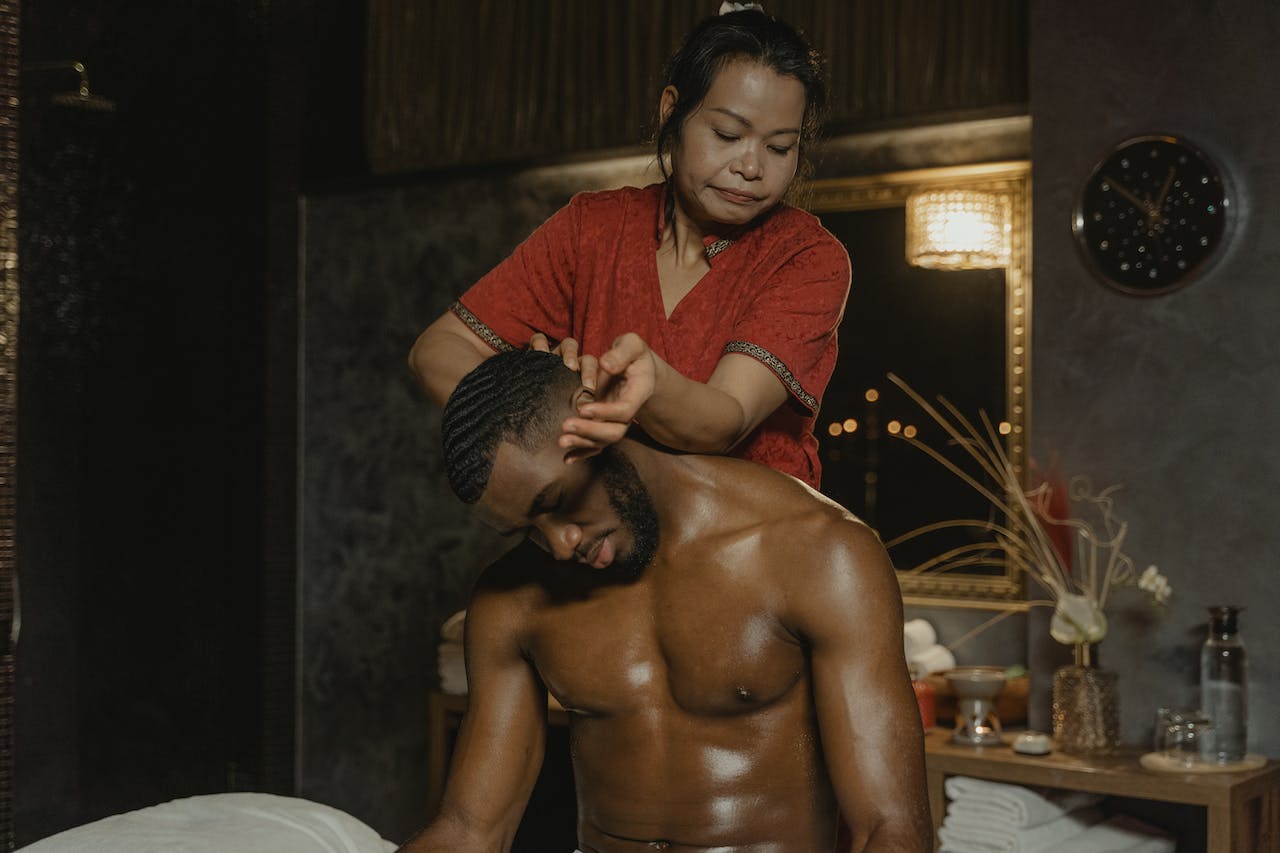

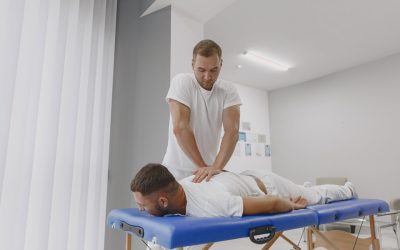
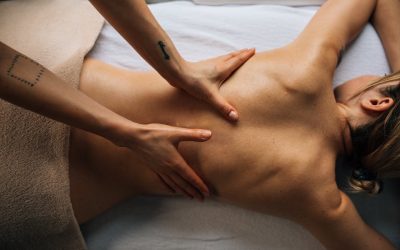
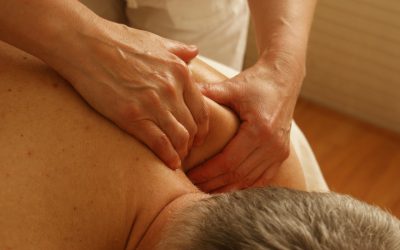
0 Comments